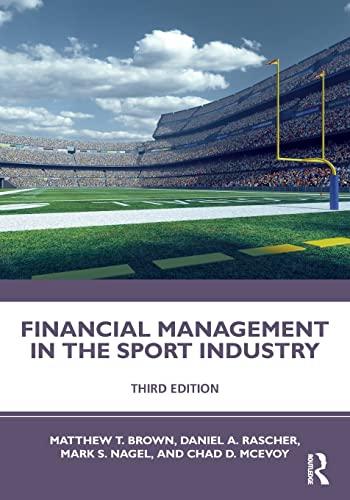Answered step by step
Verified Expert Solution
Question
1 Approved Answer
On January 2 0 , 2 0 2 4 , Rhodri Harries, Senior Vice President of Gildan Activewear, was preparing for a meeting with the
On January Rhodri Harries, Senior Vice President of Gildan Activewear, was preparing
for a meeting with the management committee scheduled the next week. On his desk was a
capital budgeting and investment proposal a new product line of branded shirts that the
committee was considering for launch. As the head of the finance department, Rhodri was
required to work along with his team on a detailed capital budgeting analysis and present the
findings to the management committee for their approval. As per standard company practice,
each capital budgeting and investment project was evaluated using the traditional Net Present
Value NPV approach and the Internal Rate of Return IRR criterion for determining whether
the company would undertake the project or not.
Rhodri had a lot to think about as he considered the analysis of the capital budgeting project.
What would be the basis for calculating the aftertax operating cash flows for the capital
project? How would he arrive at the CCA and working capital requirements for computing the
NPV What would be the basis for calculating the terminal year cash flows? With all these
questions in mind, Rhodri decided to focus on the proposed capital budgeting project for the
next few days.
North American Business to Consumer Retail Market
The North American textile market is stable. No significant growth or decline is expected in the
marketplace
Company Background
Gildan Activewear Inc. is a Canadian manufacturer of branded clothing, including undecorated
blank activewear such as tshirts, sport shirts and fleeces, which are subsequently decorated by
screen printing companies with designs and logos The company also supplies branded and
private label athletic, casual, and dress socks to retail companies in the United States. The
company has approximately employees worldwide and owns and operates
manufacturing facilities in Rio Nance, Honduras and the Caribbean.
Project Investment Proposal Details
The project is estimated to be of years duration. It involves setting up new machinery with
an estimated cost of as much as $ million CAD, including installation. This amount could be
depreciated using the straightline method SLM over a period of years with a resale value
of $ The project would require an initial working capital of $ with cumulative
investment in net working capital to be maintained at of each years projected revenue.
With the planned new capacity, the company would be able to produce pieces of shirts
each year for the next years. In terms of pricing, each shirt can initially be sold at $ CAD
apiece, which takes into account the target segment and competitor pricing. The project
proposal incorporates an annual increase of in the price of the shirt to compensate for
inflationary impact. With regards to the raw material costs and other expenses, the project
estimated the following details:
Raw material cost for manufacturing shirts at $ CAD per shirt, slated to rise by
per annum on account of inflation.
Other direct manufacturing costs at $ CAD per shirt with an annual increase of
per annum on account of inflation.
Selling, general, and administrative expenses including employee expenses at
$ per annum, expected to increase by each year.
The equipment would qualify as class for CCA purposes
Tax rate was assumed to be
Funding
For funding of the expansion project, the promoters agreed to infuse in the form of equity
with the rest being financed from issue of new debt. Based on the current credit position
and market scenario, new debt can be raised by the company at per annum. Cost of equity
was assumed to be by Rhodri. The requisite discounting rate or weighted average cost of
capital WACC for NPV and IRR calculations can now be calculated with the help of the above
assumptions.
Demand Scenario
Although the project proposal estimates maximum annual production of shirts, Rhodri
decided to do capital budgeting analysis under two demand scenarios: Optimistic and Expected.
Expected production is less than optimistic.
Rhodri has delegated the detailed financial calculations on this project to you. He has asked
you to prepare your quantitative analysis in a manner that is easy to review and could be taken
directly to the management committee if the project moves forward. He also wants your
advice on the sensitivity of any of the assumptions. Where is the project particularly sensitive
to assumptions, that if wrong, could change the decision to move forward or not move forward
with the project. Please format your analysis to him in a memo not exceeding pages double
spaced appendices are outside of this page count
Step by Step Solution
There are 3 Steps involved in it
Step: 1

Get Instant Access to Expert-Tailored Solutions
See step-by-step solutions with expert insights and AI powered tools for academic success
Step: 2

Step: 3

Ace Your Homework with AI
Get the answers you need in no time with our AI-driven, step-by-step assistance
Get Started


